Utah adventure: welcome to the Louvre of natural landscapes
Forget the Grand Canyon - Utah’s national parks are arguably the most captivating in all of North America. Our writer takes on slippery hikes and the Hell’s Revenge trail in a Hummer
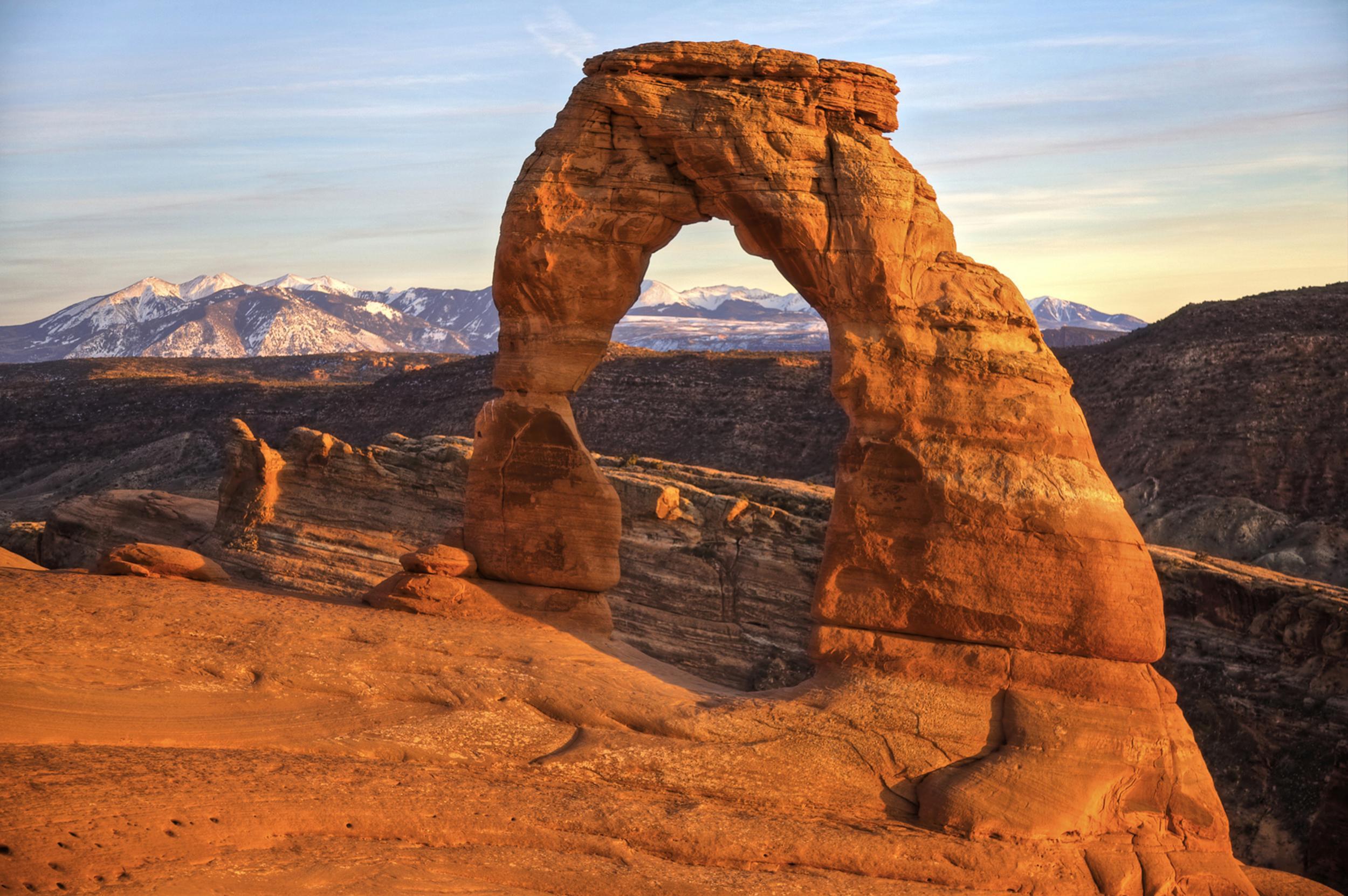
Your support helps us to tell the story
From reproductive rights to climate change to Big Tech, The Independent is on the ground when the story is developing. Whether it's investigating the financials of Elon Musk's pro-Trump PAC or producing our latest documentary, 'The A Word', which shines a light on the American women fighting for reproductive rights, we know how important it is to parse out the facts from the messaging.
At such a critical moment in US history, we need reporters on the ground. Your donation allows us to keep sending journalists to speak to both sides of the story.
The Independent is trusted by Americans across the entire political spectrum. And unlike many other quality news outlets, we choose not to lock Americans out of our reporting and analysis with paywalls. We believe quality journalism should be available to everyone, paid for by those who can afford it.
Your support makes all the difference.Our Hummer juddered to a halt, teetering at the edge of a precipice that, while on the one hand a little alarming, also overlooked a breath-taking, orange-hued view of both Utah’s Canyonlands and Arches National Parks. The sheer theatre of the jagged sandstone was so captivating, it took a while to realise we’d come to a stop alongside a perfectly preserved dinosaur footprint, filled to the brim with rainwater from the night before.
This year marks a century of the US National Park Service, and it’s an anniversary well worth celebrating – it’s in the American wilderness that the true wonder of this colossal country shines through. And while the likes of the Grand Canyon and Yellowstone need no extra publicity, it seems an apt excuse to turn to too-often-overlooked Utah, which greedily embraces five very different, equally spectacular national parks within the one state. It’s actually possible to see the “Mighty Five” in a single day, though the state tourist board warns trying to do so “would be like sprinting through the Louvre”.
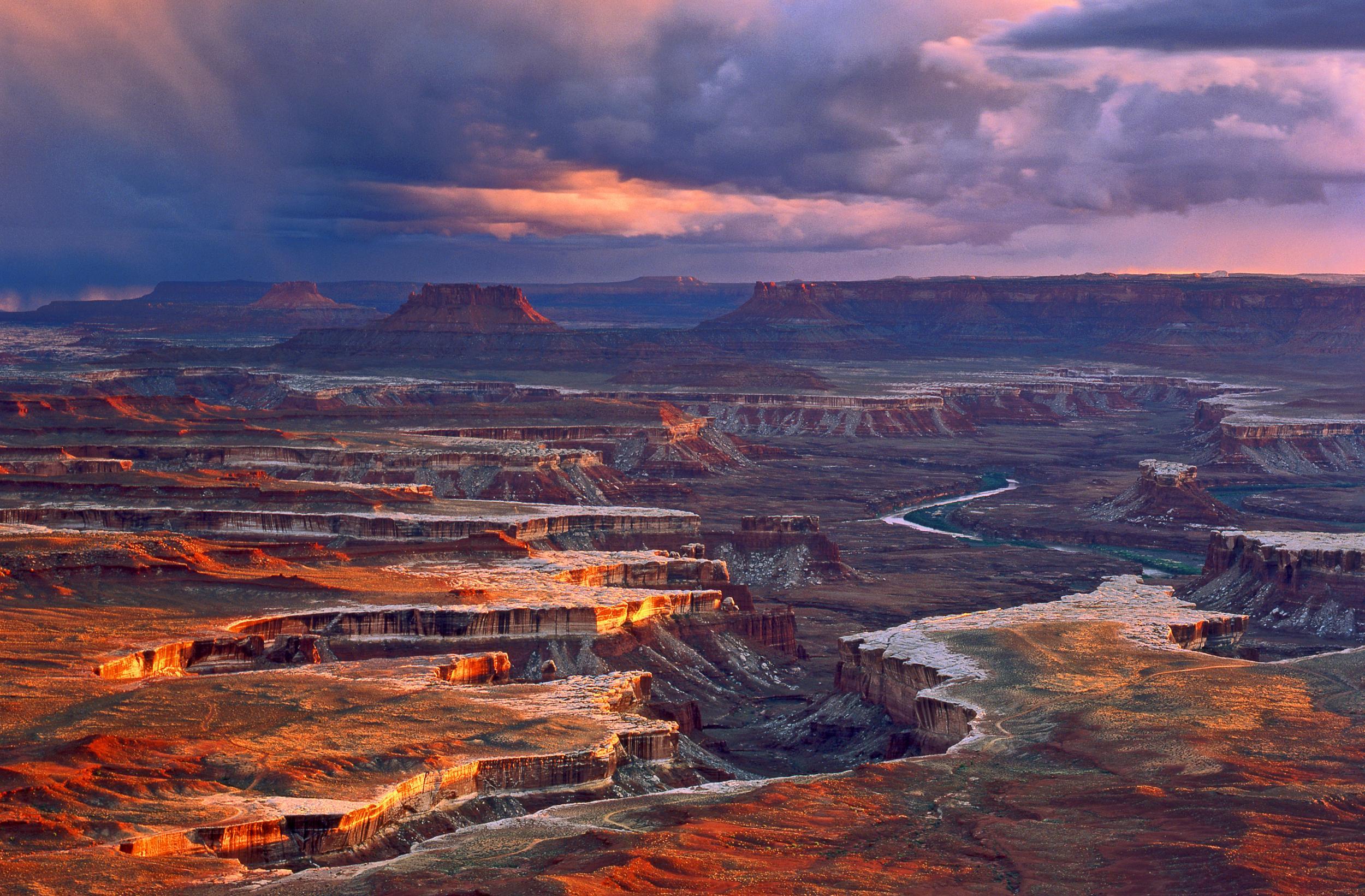
This is how I came to find myself being thrown around 'Hell’s Revenge' in a Hummer, a classic off-road adventure over steep ridges and slickrock (the state’s trademark smooth, weathered sandstone) just outside small city of Moab, in eastern Utah. The landscape is hewn out of petrified Jurassic-era sediment – Utah was once part of a prehistoric island ruled by dinosaurs – and has appeared in films from classic Westerns to Indiana Jones and the Last Crusade.
Moab is a great base from which to explore a few of Utah’s national parks at a jog. With its wooden shopfronts and red mountain backdrop, the city has an appealing American frontier feel, and as well as being encircled by both Arches and Canyonlands, is close to the Colorado River and miles of slickrock sand flats.
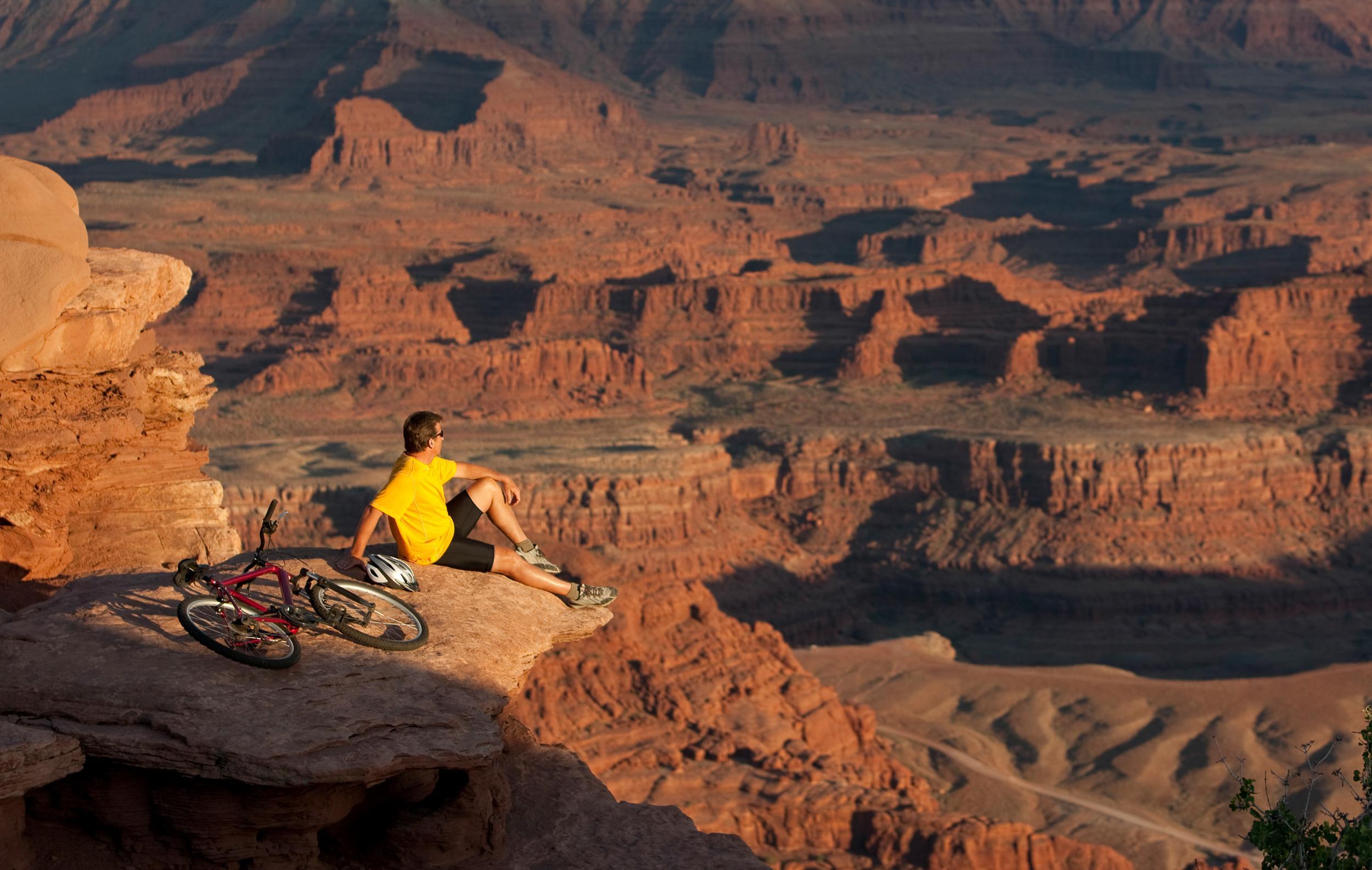
The 236-mile, three-to-four-hour drive I took to get here from state capital Salt Lake City was extraordinarily scenic: suburbs gave way to foothills, forests and year-round snow as I climbed into the mountains. You know Moab is close when you pass a cluster of enormous model dinosaurs, camped by the road at Moab Giants Dinosaur Park, which opened this year. The city itself is an unexpectedly bohemian enclave of a few thousand people, with brewpubs, antique shops and hipster burger joints.
After surviving the stomach-lurching Hummer tour, I decided it would be wise to explore Arches National Park, a 10-minute drive from Moab, on foot. This park on the Colorado River has over 2,000 natural arches, which are so perfectly formed they look man-made; it feels eerie to see them standing in the empty desert, like huge window frames left behind after the building around them crumbled.
In reality, they’re formed when water dissolves the sandstone, soaking in and eroding it from the inside out, and then freezing to pry layers of rock apart. The landmarks these cycles leave behind sound like something out of Dante’s Inferno, with names like 'Devil’s Garden' and the 'Fiery Furnace'.
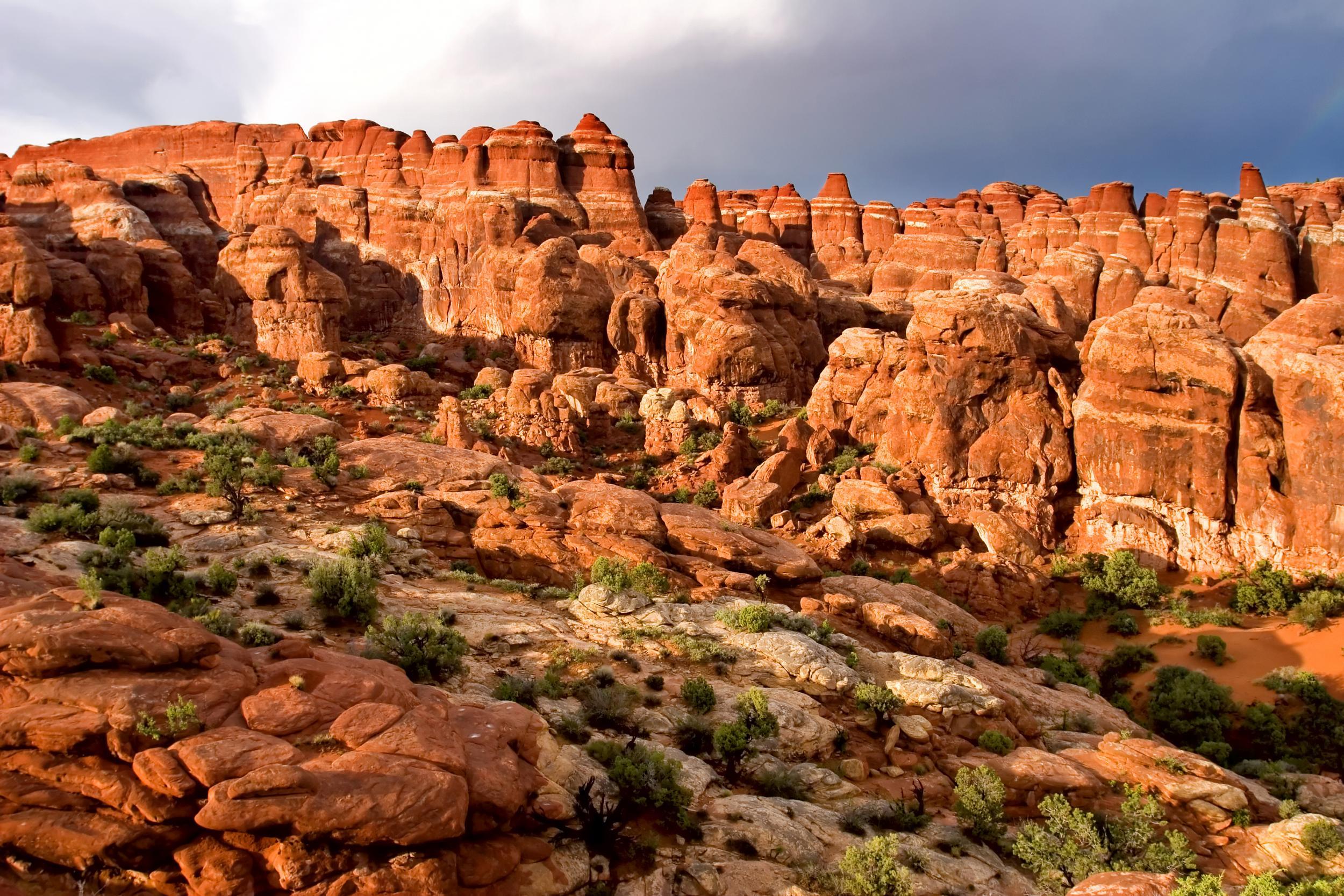
The latter is a natural maze of narrow sandstone canyons you are advised to only navigate with the help of a ranger. There are easier hikes, though, including a 20-minute walk around the base of 'Balanced Rock', a precarious-looking boulder high atop a natural rock column. Or there’s a mile-long walk and gentle climb up to the prehistoric Courthouse Wash Rock Art Site, a cliff-side dotted with ghostly paintings of humans and animals – believed to have been left by native people who lived along the Fremont River hundreds of years ago.
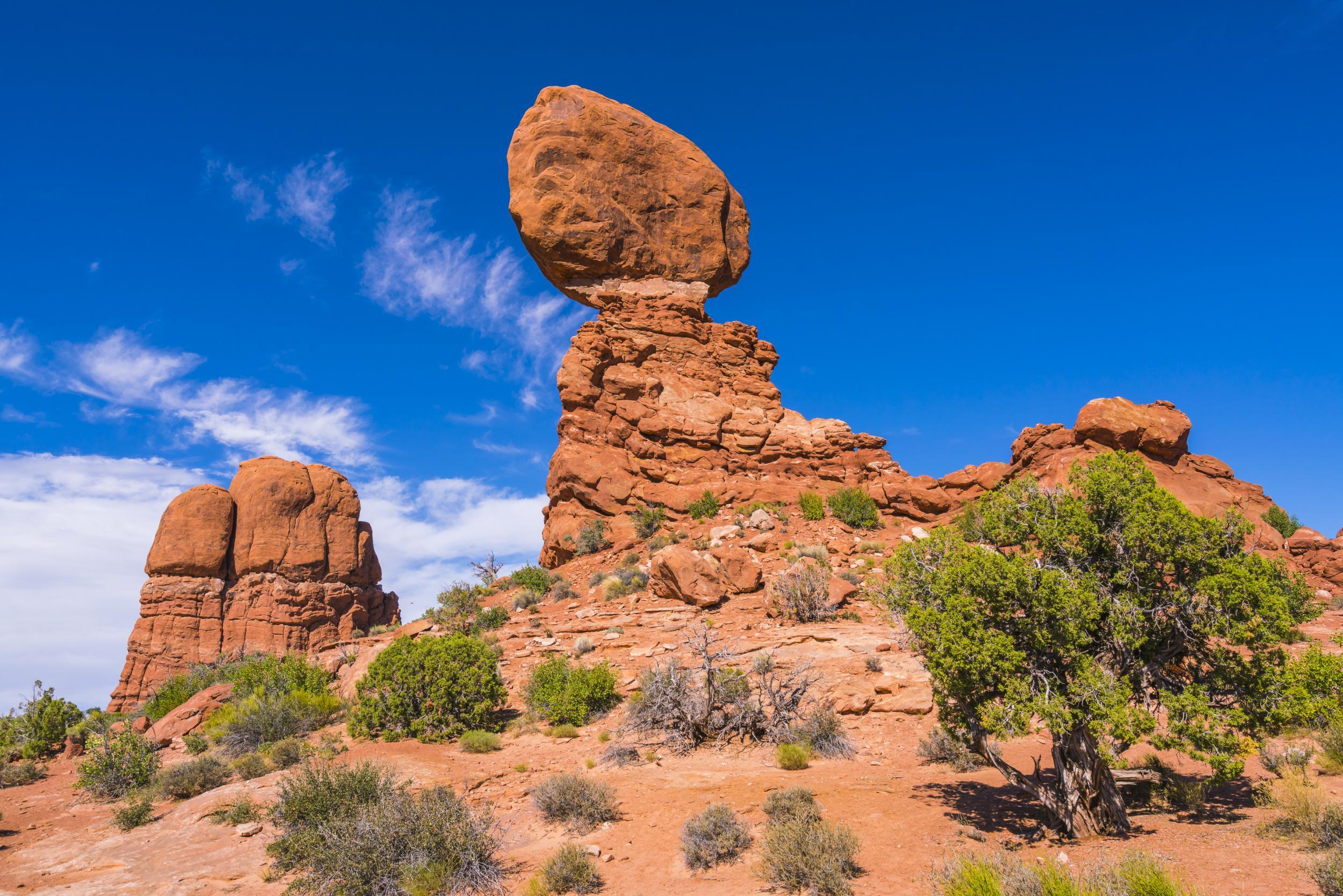
I enthusiastically picked a three-mile hike listed as 'Difficult' on Arches’ website. It turned out to be a bit of an endeavour for a Londoner whose idea of a difficult walk is the slight incline between my house and Sainsbury’s Local. The route climbed past a wall dotted with native paintings, before it turned into a sheet of smooth, red slickrock. It turns out that in the heat of the day, scrambling from wooden trail marker to wooden trail marker across smooth, slippery surfaces really did take the two-and-a-half hours they advised.
But the careful sidestepping and ledge-shimmying paid off: the slickrock gave way to an enormous bowl, and on the other side, the imposing 'Delicate Arch', Utah’s most recognised landmark. Prosaically also known as 'Cowboy’s Chaps' and 'Old Maid’s Bloomers', the largest free-standing arch in the park frames the mountains behind it more effectively than any Instagram border ever could.
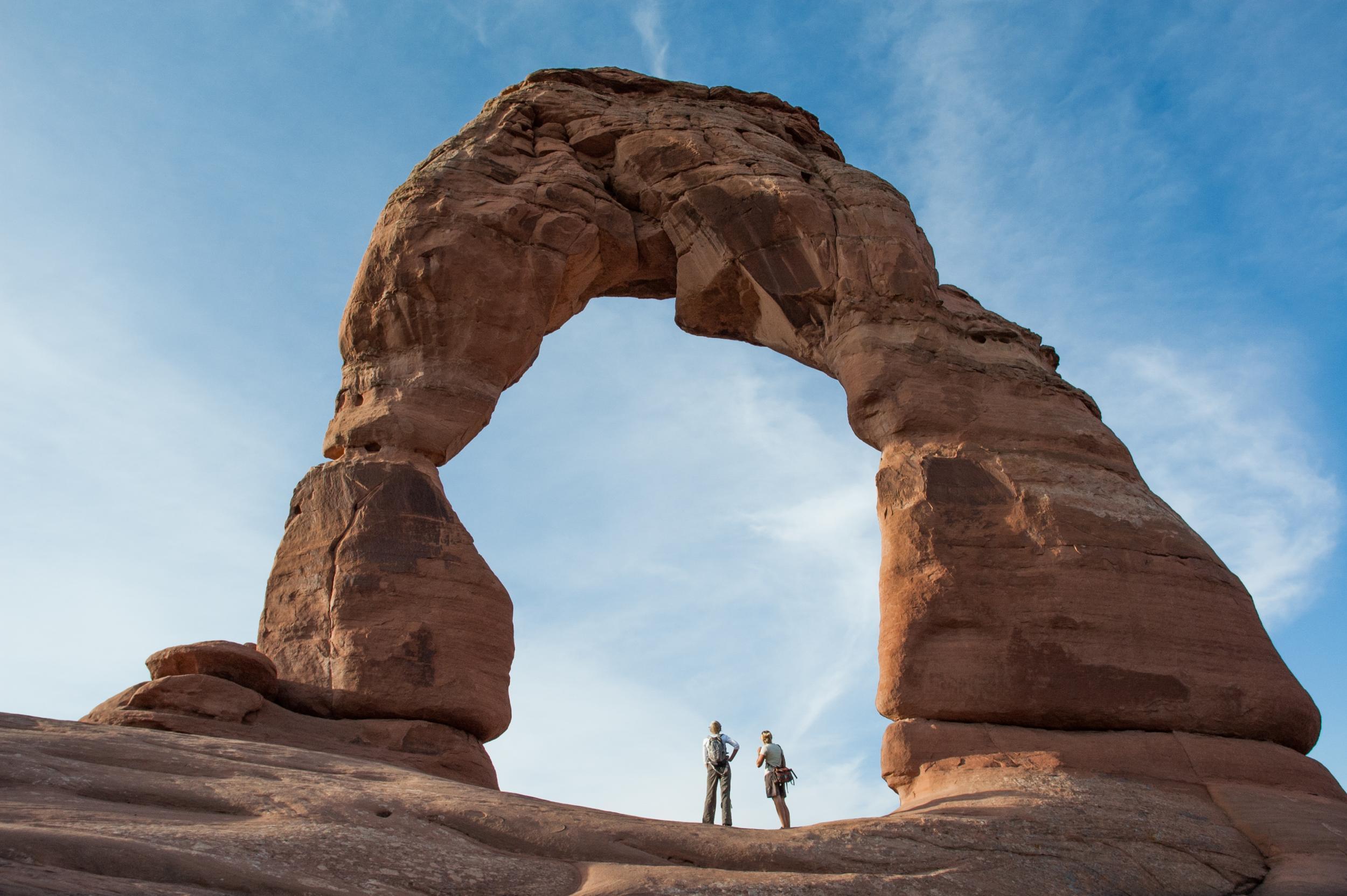
Standing underneath the arch and looking out at the landscape’s vastness was a humbling experience: the ground falls steeply away into a deep valley, then rises up to become the La Sal mountain range. Braver hikers than I sprang into handstands and yoga poses to snag the ultimate profile picture.
I banished the memory of the nerve-wracking slide back down at Moab's Sunset Grill, which ordinarily would offer an amazing view of the sunset over Canyonlands. Sadly, there wasn’t much sun to see as I wolfed my artichoke bruschetta; instead I watched a brutal rainstorm tear up the Colorado River.
Moab’s other national park, Canyonlands, just to the town’s south-west, will forever be known as the site of the grisly climax of the film 127 Hours, when adventurer Aron Ralston was forced to extract himself somewhat painfully from beneath a rock in Bluejohn Canyon. Each of the park’s three districts are distinct: Island in the Sky, the closest to Moab, is worth a trip to explore the Mesa Arch, a low, sloping structure that frames an incredible canyon vista and is easy to reach along one of the park’s more gentle trails.
Visits to other top landmarks, The Needles and the remote western Maze, need foreplanning and, in some cases, help from a ranger, because of their remoteness and lack of services – including water sources.
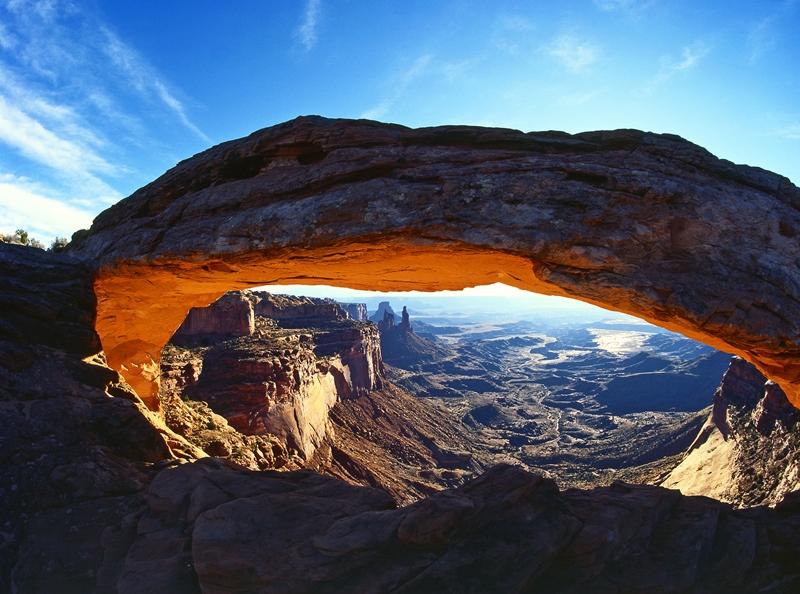
Luckily Moab has plenty to offer the less adventurous, so I instead spent the evening at Eddie McStiff's Restaurant, perched at the long bar listening to live, chilled-out country music with a beer brewed at nearby Moab Brewery and Restaurant.
I stopped early to have a clear head for a dawn return to Arches – the park is open 24 hours a day. While vast, Arches can get overrun by visitors, and I wanted the chance to soak it all up in peace. My wake-up call was rewarded: overnight, the storm had passed, and I watched the Jurassic sandstone spring alive as the sun rose from the river mist to illuminate its towering rock fins.
Travel essentials
Getting there
The closest major airport to Moab is Salt Lake City International: Delta (0871 221 1222; delta.com) launched the first direct flights between the UK (Heathrow) and Salt Lake City in May.
Staying there
The Gonzo Inn (001 435 259 2515; gonzoinn.com) offers retro, 70s-style rooms, with prices from around $220 (£167) a night, including breakfast.
More information
Join our commenting forum
Join thought-provoking conversations, follow other Independent readers and see their replies
Comments